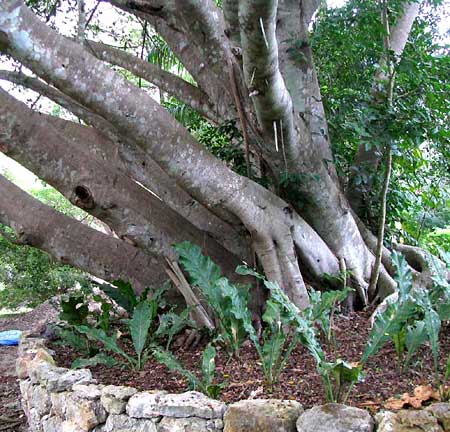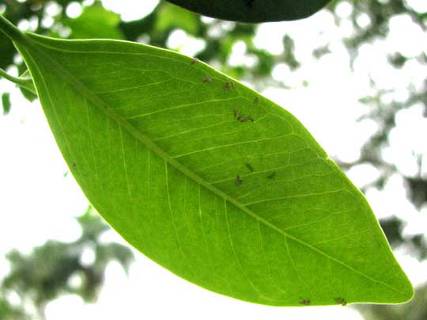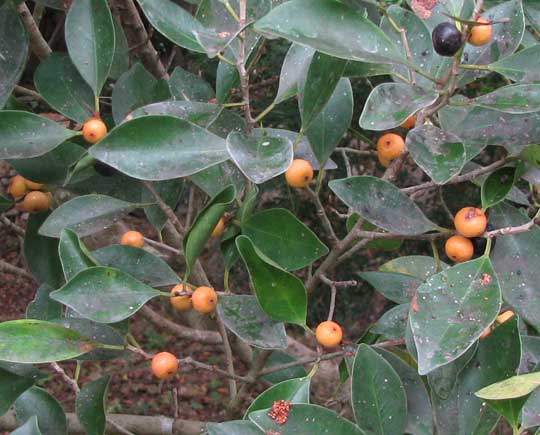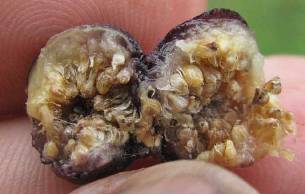

When you see big, multi-trunked trees with smooth, gray bark like the one above, whether it's sprouting from the top of a Maya ruin or out in the forest, probably it's one of several native, wild species of Yucatan's "strangler figs." However, if you see such a tree in town or around an old hacienda, there's a good chance that you have a fig tree brought from outside the country. That's the case with the one pictured above.
That's a Chinese Banyan, Ficus microcarpa, from southern Asia and northern Australia but now widely planted in the tropics worldwide. Since it's a Ficus you know that it's a real fig tree, despite its leaf, shown below, not having a "fig-leaf shape."

Like most figs, banyans produce spherical, pea-sized fruits which are very unlike the Common Fig's large, pear-shaped fig. Below, you see a branch of a Chinese Banyan loaded with figs.

 One feature causing that fig-loaded branch to be so typical is that its leaves are well splattered with bird poop, for many bird species eat figs. Sometimes as they fill the trees with their hopping, flitting and calling they eat so many figs that they get the runs! That's part of nature's plan, however, for wherever the splattered poop lands, the fig's tiny seeds are sown.
One feature causing that fig-loaded branch to be so typical is that its leaves are well splattered with bird poop, for many bird species eat figs. Sometimes as they fill the trees with their hopping, flitting and calling they eat so many figs that they get the runs! That's part of nature's plan, however, for wherever the splattered poop lands, the fig's tiny seeds are sown.
Above and at the right you see a split-open Chinese Banyan fig. Such figs are edible but they're so small and tasteless -- not to mention the bird-poop problem -- that hardly anyone bothers to snack on them.